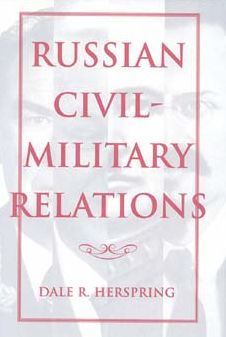Russian Civil-Military Relations
". . . a volume that provides both solid historical background for the novice reader and provocative and thoughtful material for the more advanced scholar. It should find wide classroom use at all levels and will be an important addition to the bookshelf of any analyst of post-Soviet security affairs." —Slavic Review"The history is both fascinating and timely . . ." —European Security"When military reform returns to its deservedly prominent place in the Russian political agenda, Herspring's book will offer invaluable guidance." —Mark von HagenDale Herspring analyzes three key periods of change in civil-military relations in the Soviet Union and postcommunist Russia: the Bolshevik construction of the communist Red Army in the 1920s; the era of perestroika, when Mikhail Gorbachev attempted to implement a more benign military doctrine and force posture; and the Yeltsin era, when a new civilian and military leadership set out to restructure civil-military relations. The book concludes with a timely discussion of the relationship of the military to the current political struggle in Russia.
1101477326
Russian Civil-Military Relations
". . . a volume that provides both solid historical background for the novice reader and provocative and thoughtful material for the more advanced scholar. It should find wide classroom use at all levels and will be an important addition to the bookshelf of any analyst of post-Soviet security affairs." —Slavic Review"The history is both fascinating and timely . . ." —European Security"When military reform returns to its deservedly prominent place in the Russian political agenda, Herspring's book will offer invaluable guidance." —Mark von HagenDale Herspring analyzes three key periods of change in civil-military relations in the Soviet Union and postcommunist Russia: the Bolshevik construction of the communist Red Army in the 1920s; the era of perestroika, when Mikhail Gorbachev attempted to implement a more benign military doctrine and force posture; and the Yeltsin era, when a new civilian and military leadership set out to restructure civil-military relations. The book concludes with a timely discussion of the relationship of the military to the current political struggle in Russia.
29.95
In Stock
5
1

Russian Civil-Military Relations
256
Russian Civil-Military Relations
256
29.95
In Stock

Product Details
| ISBN-13: | 9780253332257 |
|---|---|
| Publisher: | Indiana University Press |
| Publication date: | 12/22/1996 |
| Pages: | 256 |
| Product dimensions: | 6.12(w) x 9.25(h) x (d) |
| Age Range: | 18 Years |
About the Author
From the B&N Reads Blog
